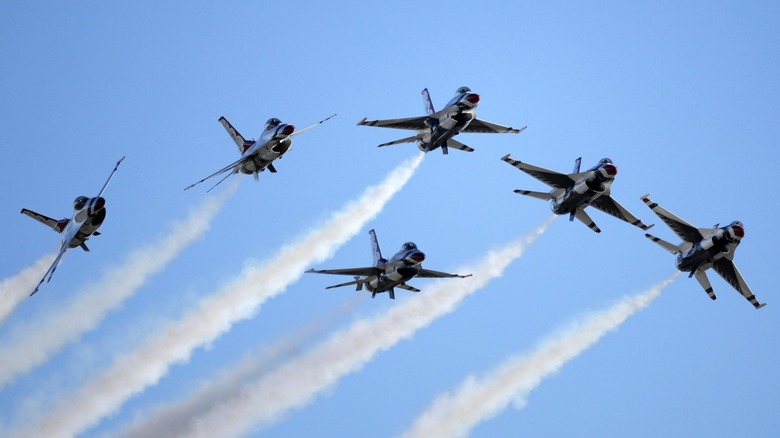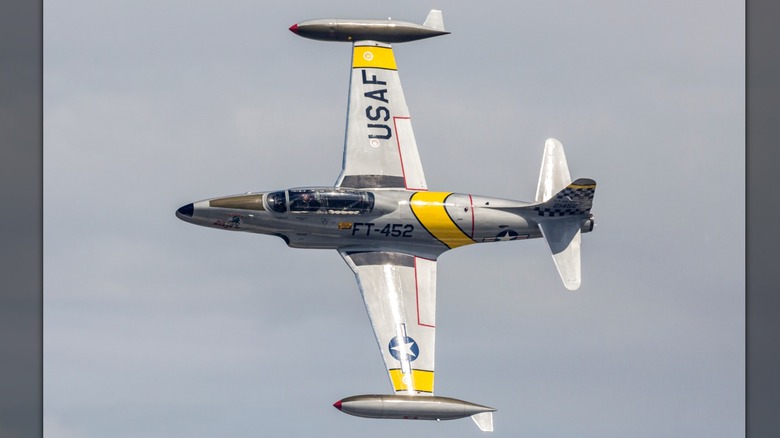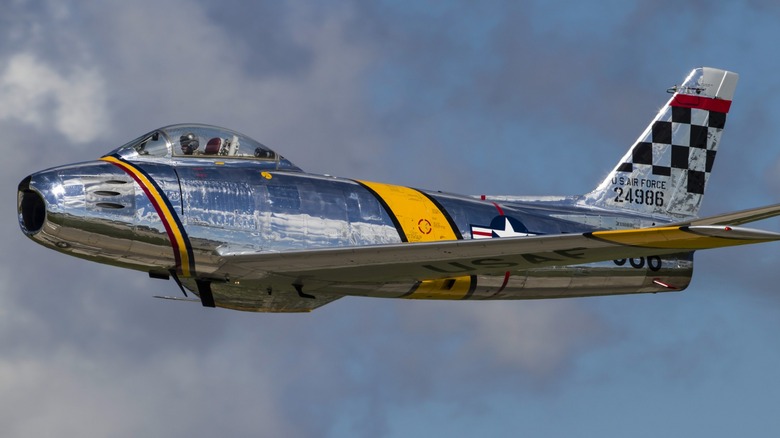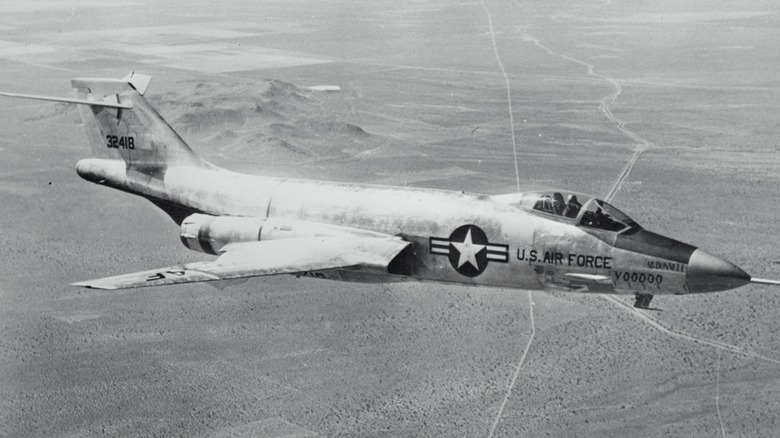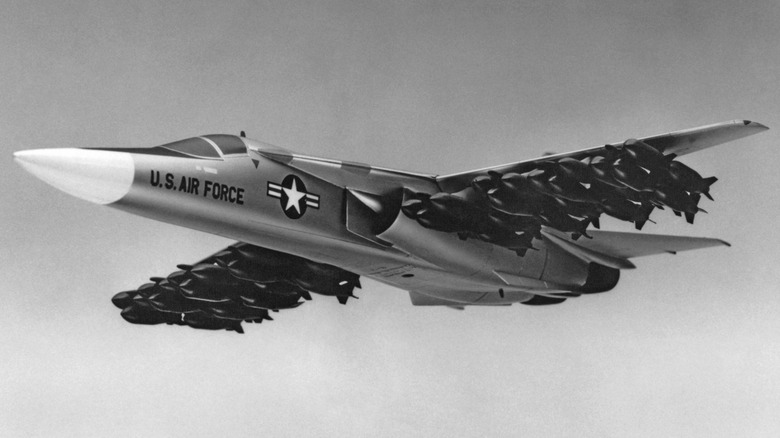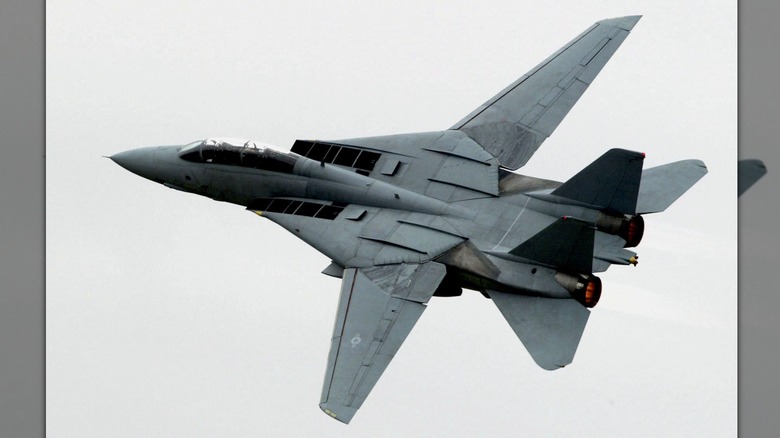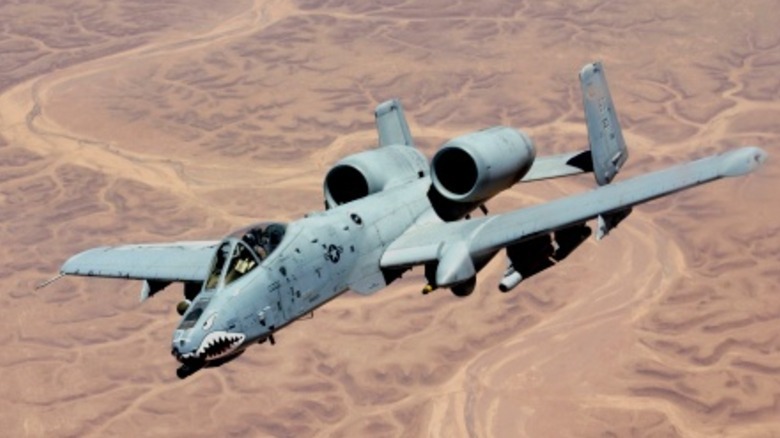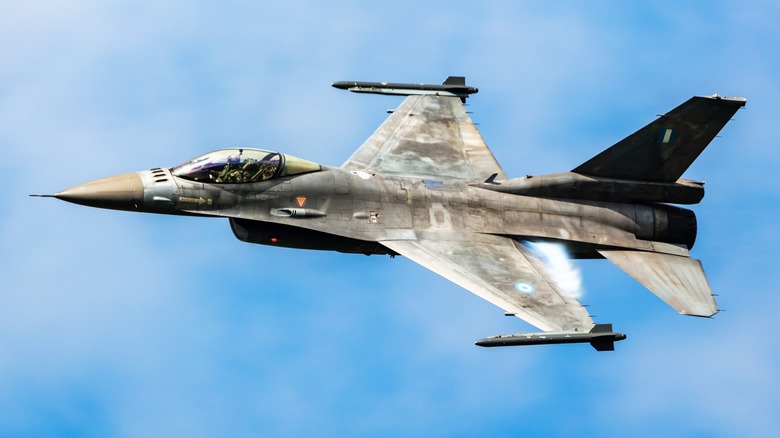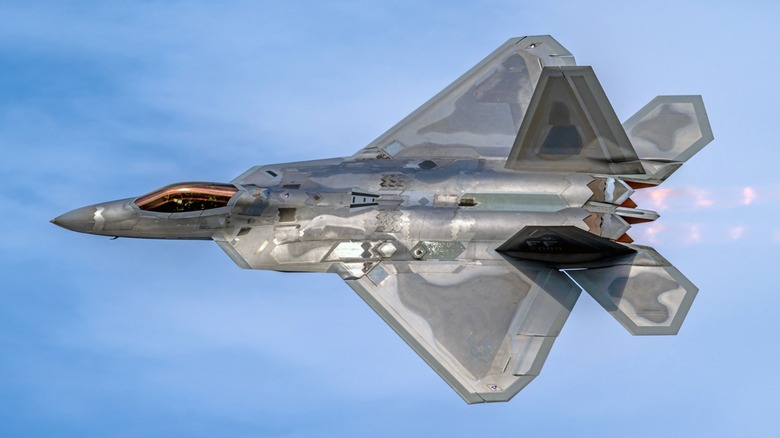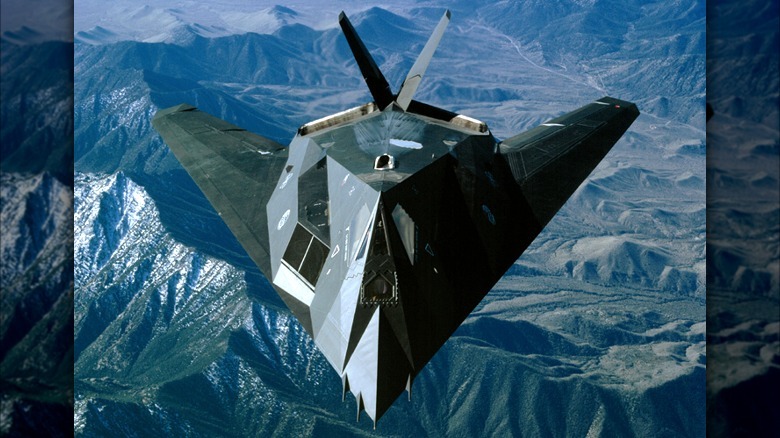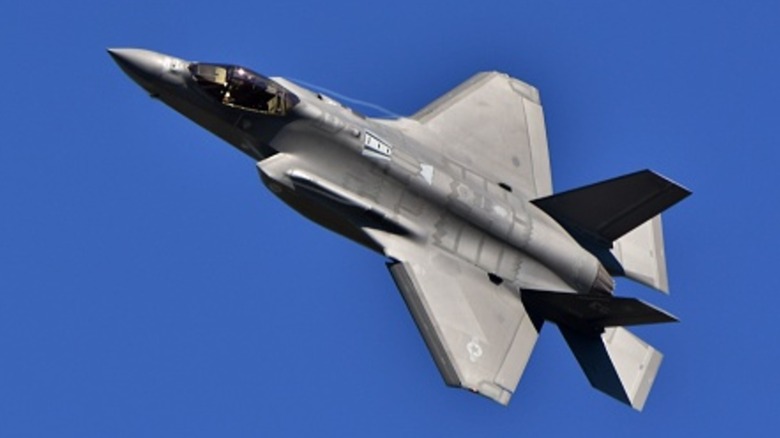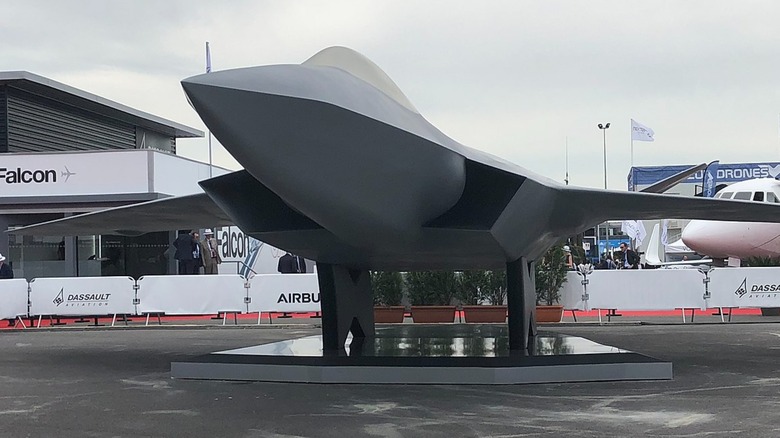US Fighter Jet Generations: A Complete History
American fighter jets serve dual roles as symbols of American power as well as enforcers of it. With a rich history of pilots who have undergone the most rigorous training programs in the world piloting the most advanced aircraft that engineers and scientists can create, the fighter jets of the U.S. military provide the United States with a great deal of airborne reach. Combined with air bases operated with global partners and the Navy's ability to operate offshore, America's jets project power worldwide.
The U.S. military invests an extraordinary amount of money into its aircraft. Furthermore, developing the most potent and advanced aircraft has remained a priority of the military ever since the close of the Second World War and the opening of the Cold War. Having a formidable adversary in the Soviet Union during the Cold War spurred continuous development, resulting in the regular introduction of new features and capabilities.
The competition led to a series of loosely defined designations of fighter jet generations, each categorized by particular attributes and abilities. Divisions between them are subject to interpretation and not widely agreed upon. Before we can truly understand the development of sixth-generation fighter jets in the upcoming decades, we must first look back at the five generations that led to them.
First-generation subsonic jet fighters
Jet engine technology came about as the horrors of World War II played out on the battlefield. The technology originated simultaneously in both Germany and the U.K., with one of the earliest patents going to Brit Frank Whittle in 1930. As early as 1941, American military personnel began researching the new engine technology and observing test flights, eager to develop designs for use in American aircraft.
Engine development continued as the war raged on, and turbojets built by General Electric powered the first American jet aircraft in 1942. The U.S. Navy first tested its jet engine on a hybrid aircraft that also retained a propeller on its nose. The Ryan XFR-1 Fireball flew by propeller until it was ready to intercept enemy aircraft, then switched on the turbine for combat. The first jet aircraft flown by the U.S. Army Air Forces, predecessor to the Air Force, was the Bell XP-59 Airacomet, which never entered combat.
Immediately following the war, the development of jet aircraft pressed on in earnest, resulting in multiple models for varying roles. Speeds increased substantially over propellor fighters but did not break the sound barrier for some time. Most of the jets built during this period followed the designs of proven fighter planes of the era, with jet engines either incorporated into the fuselage or attached to the wings. However, a significant breakthrough came with America's first swept-wing design in the North American F-86 Sabre.
North American F-86 Sabre
Several aircraft produced during the Second World War entered service immediately after the conflict. The Lockheed P-80 Shooting Star reached Italy in early 1945 but saw no combat in World War II. It went on to see widespread service and set an airspeed record of 623 mph in 1947. While it and other jets, such as the F-84 Thunderjet, represented a huge step in terms of development, the F-86 Sabre was more of a leap forward for first-generation fighter jet design.
While military orders vanished as the wartime economy wound down, North American Aviation opted to innovate to create the next jet fighter. Armed with engineering plans procured from the defeated German Luftwaffe, engineers noted the key to the German ME-262's speed came from its wing shape. Instead of adapting the existing airframes as others had, North American created the swept-wing F-86-Sabre, which ruled the skies over Korea.
P-51 Mustangs encountered the new Soviet MiG-15 early in the Korean War at a huge disadvantage — even the P-80 jet trailed the MiG significantly in speed. So the Air Force positioned the F-86 Sabres near Seoul, immediately turning the tables and claiming a victory ratio of 14-to-one. More than 8,000 Sabres of several variants were built in total, with licensed models made in Canada, Japan, and Italy.
Second-generation supersonic fighters
As the first batch of jet fighters capitalized on the new engine technology and engineers figured out how best to harness the advantages of its power delivery, the next batch sought to fine-tune it for speed, to great results. Technology of the 1950s advanced at a breakneck speed, including aerospace.
As jets began to fly faster, tactics changed, altering priorities for aircraft designers. Speed and weapons guided design decisions. The first operational supersonic jet fighter was the F-100 Super Sabre, a modified F-86 that proved to be a fast interceptor but suffered so many accidents it made our list of the five worst fighter jets to fly for the U.S. Air Force. Jets gained advanced radar and guided missiles, simultaneously making them more lethal and accurate. From the U.S., aircraft from the Century Series proliferated during this period.
Experiences of the Korean War shaped aircraft development through the 1950s, and a range of proposals for new models collectively became known as the Century Series. Built by multiple defense contractors, the proposals that made it to production defined the era and became widely used in the skies over Vietnam. However, Century Series results were mixed. As aircraft with new capabilities emerged, flaws in design soon followed. Regardless, thousands of them were produced, including the Republic F-105 Thunderchief, Convair F-102 Delta Dagger, McDonnell F-101 Voodoo, and the most widely used among them, the Lockheed F-104 Starfighter.
Lockheed F-104 Starfighter
As a second-generation fighter, the design of the Lockheed F-104 Starfighter capitalized on an airframe made for outright speed. Its slender fuselage with integrated engines resembles a bullet more closely than anything else. With a long and sharply pointed nose cone and unusually narrow wingspan, it could slice through the air like a hot knife through butter. It was, after all, the first interceptor aircraft to sustain a speed above Mach 2, double the speed of sound. However, although it was the fastest thing in the skies, it came with some deficiencies.
To start, its only armaments were a single 20mm cannon and a pair of hard points on the wingtips to which air-to-air missiles or a pair of conventional or nuclear bombs could attach. The wingspan is incredibly narrow, making it possible to soar at incredible speed, up to 1,320 mph, but only in conjunction with the massive General Electric J79 turbojet providing up to 15,800 pounds of thrust. This also made its turning radius extremely wide, reducing agility for dogfights, and a high angle of attack made it prone to stalls when climbing — if a too-common engine flameout did not occur first.
Because its limitations were known prior to production, the Starfighter received a first for any jet, an ejection seat. Unfortunately, its poor safety record earned the Lockheed Starfighter the nickname "The Widowmaker." Regardless, more than 2,500 aircraft were built and flown by over a dozen nations before the last one was retired by Italy in 2004.
Third-generation multirole jet fighters
Following the Century Series aircraft, military jet fighter production pared down the number of models produced, instead changing the design approach to build fewer aircraft that could fulfill a broader range of roles. Despite this trend, the importance of continued development of highly capable and state-of-the-art aircraft rose along with the levels of troop deployment to Vietnam throughout the 1960s.
Among the newest capabilities debuting in this era were pulse-doppler radar, providing lookdown/shoot-down capability, a range of new guided missiles, and increasingly powerful engines, such as the Pratt and Whitney TF30, the first turbofan with afterburner, capable of 20,000 pounds of thrust. Improved speed and weaponry paired with increases in maneuverability in ways that jet fighters could perform multiple missions with the same aircraft. The multirole fighter is meant to engage in air and ground attacks to maintain air superiority and defend ground operations, benefitting from being highly agile and able to respond to changing conditions during an operation. These found significant use during the conflict in Vietnam.
Demonstrating the changing abilities of jet fighters more than any is perhaps the Hawker Siddeley Harrier / AV-8A, commonly called the Harrier jump jet. Additional aircraft included the General Dynamic F-111 Aardvark, a long-range strategic bomber and tactical strike aircraft, which introduced the variable swept wing, and the McDonnell Douglas F-4 Phantom II, one of the most successful aircraft of its kind.
McDonnell Douglas F-4 Phantom II
Originally meant to be a missile-firing defender, the McDonnell Douglas F-4 Phantom II design transformed into that of a multirole fighter equipped with a pair of turbojets capable of nearly 40,000 pounds of thrust, giving it a top speed of 1,400 mph and a ceiling of up to 60,000 feet. Generous use of titanium ensured the airframe was light and strong, while advanced pulse-doppler radar provided precision targeting and situational awareness.
First entering into service with the Navy in 1960, the Phantom quickly became indispensable as one of the most capable machines in the sky. Adopted by the Air Force and Marine Corps, the Phantom was frequently used in Vietnam as an air superiority fighter. It also proved itself in ground attack and reconnaissance roles throughout the conflict. Furthermore, its armament options gave it excellent offensive and defensive capabilities as nine hardpoints provided an array of possible weapons, including Sparrow, Sidewinder, and Maverick missiles, glide and laser-guided bombs, and nuclear weapons. Drop fuel tanks were also an option for increased range.
The F-4 Phantom was a groundbreaking aircraft that served its crew well and was well-liked by its pilots. Additionally, the forces that used it apparently felt the same way, because more than 5,000 aircraft were built in total over its lifespan. And despite having service that started during the Eisenhower administration, F-4 Phantoms were not retired by the U.S. until 1983 and continue to serve with Turkey's air force today.
4th-generation advanced jet fighter
As aircraft development continued into the 1970s, computers started playing a larger role in design and engineering as well as in the aircraft themselves. Airframe design during this period continued to optimize aircraft to be adaptable for multiple roles while integrating advanced technology and increasingly sophisticated avionics, targeting, and weapons systems. Furthermore, the era of fly-by-wire debuted, making the jets more agile and controllable.
The impact of the proliferation of microprocessors since the 1970s cannot be understated concerning fourth-generation fighters. Aircraft transformed from machines demonstrating incredible mechanical engineering feats to extraordinary computer engineering accomplishments, providing added maneuverability from thrust vectoring with variable position jet nozzles, sophisticated heads-up displays, and radar enhancements such as active electronically scanned arrays with infrared search and track. This further allowed pilots to strike at targets well beyond visible range with high accuracy.
Many aircraft made during this period will be well known to aviation fans. The fighter jets featured in the 1986 movie "Top Gun" were Grumman F-14 Tomcats. While it has since been retired, other fourth-generation models continue to serve, such as the Navy's F/A-18 Hornet, the Air Force's F-15 Eagle, and the subsonic flying tank, the A-10 Warthog attack plane, which is so mean it can take anti-aircraft fire and keep flying. However, the workforce of American air defense and that of many nations around the globe is the Lockheed Martin F-16 Fighting Falcon, perhaps the world's most highly versatile and effective combat aircraft.
Lockheed Martin F-16 Fighting Falcon
Originally built by General Dynamic, the F-16 Fighting Falcon is now a Lockheed Martin product as a result of an acquisition. The first deliveries to the USAF began in 1978, and they achieved operational status in 1980. Originally planned as a lightweight fighter, the F-16 is much smaller when put up against its fighting peers, particularly the Russian Sukhoi Su-34, which dwarfs the F-16, but only in size and not capability.
In the decades since the F-16 began flying, it has delivered on its promise to be an adaptable and highly capable jet fighter. Powered by a single General Electric F110 turbofan, it can reach speeds of around 1,300 mph and altitudes of up to 50,000 feet. At the same time, its compact size and advanced avionics provide pilots with unmatched agility. Furthermore, in the decades since its debut, Lockheed upgraded the F-16 from nose to tail with so many sophisticated electronics that the latest F-16 Block 70/72 is considered a 4.5-generation fighter.
In addition to a single 20mm cannon, the F-16 offers an impressive 11 hardpoints for a range of weapons, including guided missiles, conventional and nuclear bombs, and accessory fuel tanks or electronic countermeasure pods. Additionally, low operating costs make the F-16 an attractive aircraft for American defense and for the many countries – 25 as of 2022 — also operating this aircraft. The latest operator, Ukraine, demonstrated its effectiveness when one pilot eliminated six cruise missiles in 2024. Despite its age, continuing production of the F-16 could see them flying into the 2070s.
Fifth-generation stealth jet fighters
With early development commencing in the early 1980s, the most recent generation of fighter jets uses the lessons learned from nearly a century of aerial combat in conjunction with the latest and most sophisticated technology in the world to build invisible jets... on the radar. Stealth is the common parlance people use when referring to this capability of fifth-generation jet fighters, but the official designation of the stealth feature is low observable technology, referring to its radar cross-section (RCS), which refers to how large the aircraft appears when picked up by radar.
Stealth planes are obviously not really invisible. They are designed to bounce radar signals away to lower the RCS. By forming the airframe in a shape that disperses radar signals at an angle such that it is not returned to the radar that sent it, a 40-foot aircraft can appear as small as a sparrow in flight. The F-117 Nighthawk was the first "invisible" jet to achieve stealth capability. Its distinctive shape resulted from early computers incapable of calculating a low observable curved shape. Furthermore, despite its "F" designation, the Nighthawk was a bomber with no cannons or aerial combat capabilities.
Another fifth-generation stealth aircraft is the Lockheed Martin F-22, one of the fiercest and most sophisticated air superiority fighters ever built. However, despite its impressive abilities, the F-22 fighter jet was discontinued in 2011, and the focus shifted toward the workhorse of American fleets, the F-35 Lightning II.
Lockheed Martin F-35 Lightning II
As one of the most expensive defense programs ever conceived, the Lockheed Martin F-35 Lightning II had high expectations as it first rolled off assembly lines in 2006. Designed and built in three versions for the Air Force, Navy, and Marine Corps, each variant is tailored to the specific needs of the various branches operating the aircraft. Small differences in size, configuration, and payload capacity make up most of the changes between them, but the Marine's version includes a centrally-mounted vertical fan and rotating engine nozzle, allowing for vertical take-off and landing, an impressive maneuver to watch.
Meant to replace multiple aircraft, the F-35 program is extraordinarily expensive. The aircraft's expected 66-year life cycle also comes with an expected $1.3 trillion cost over that period. However, with the F-35, operators received the most advanced mass-produced jet fighter ever made. Not only can it carry a wide range of weapons and fly with extreme speed and agility, but its communications suite also makes it essentially a flying command center, able to communicate in real-time with air, land, and sea-based commanders while relaying information back and forth from its vast array of sensors.
Although the F-35 is not without problems, such as huge cost overruns and design flaws, it remains the pinnacle of jet fighter development. To date, 785 aircraft have been built and are operated by 19 countries. With an acquisition cost of around $100 million per unit, potential operators are limited.
Future sixth-generation AI-integrated jet fighters
Although China and Russia both claim to be developing sixth-generation fighters, neither has yet presented even a robust fifth-generation program to compete with the F-35. Multiple reports demonstrate that Russia's Su-57 is riddled with quality flaws, its Su-75 is yet to appear, and China's program is still decades behind that of the United States.
The American Next Generation Air Dominance platform is under development to deliver the next generation of stealth fighter jets. However, concerns with cost are slowing progress — aircraft acquisition estimates of $300 million per unit are raising nearly all the eyebrows in Washington. Nonetheless, rest assured development will continue as nothing seems to stop the Department of Defense and America's desire to retain its power.
With the stealth technology of the F-35 appearing to be as advanced as possible, future aircraft will continue to incorporate advanced technology. What this means for the next aircraft is the integration of AI to automate some functions and provide pilots with a semi-autonomous drone, such as the Boeing Loyal Wingman, which is already undergoing testing. Development continues, and the Air Force has reportedly already flown a prototype. Still, the unpredictability of Washington politics and the changing priorities of American citizens can always throw a wrench in the works. Only time will tell when the next generation of fighter aircraft will emerge ready for service.
